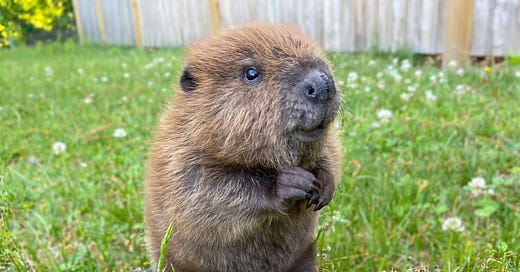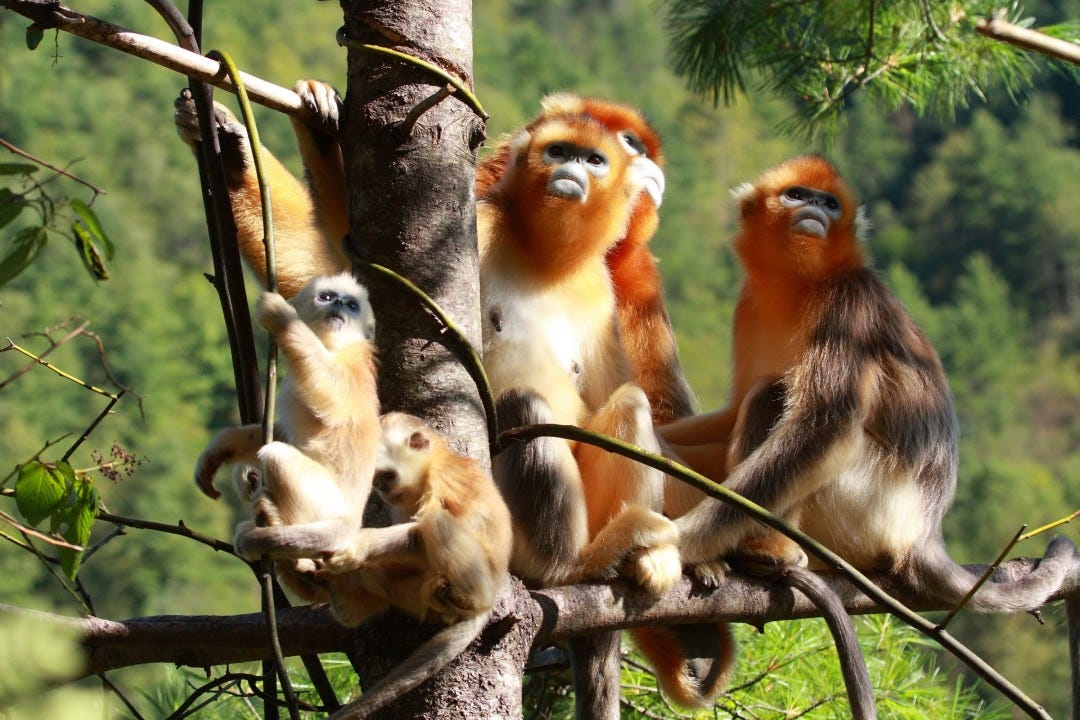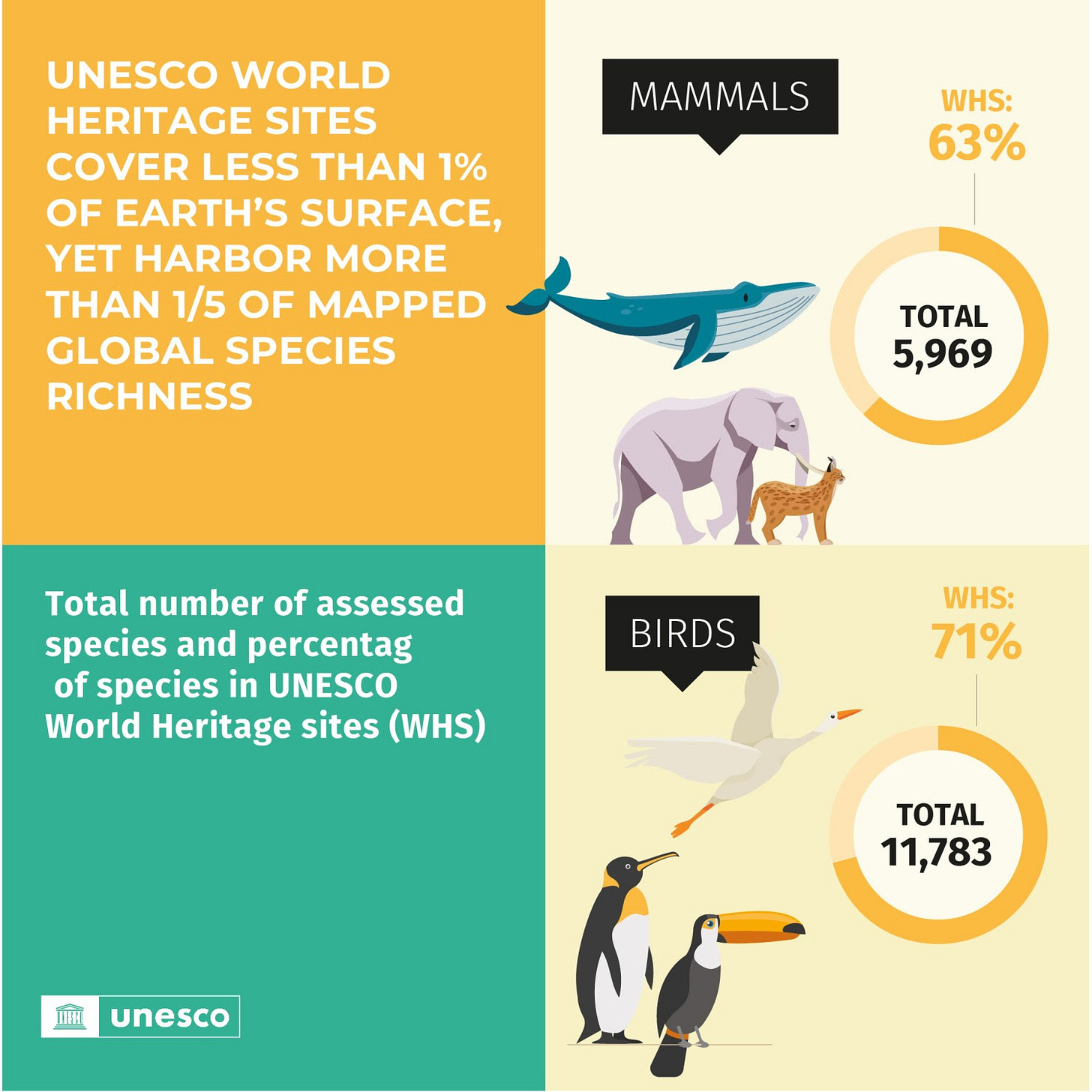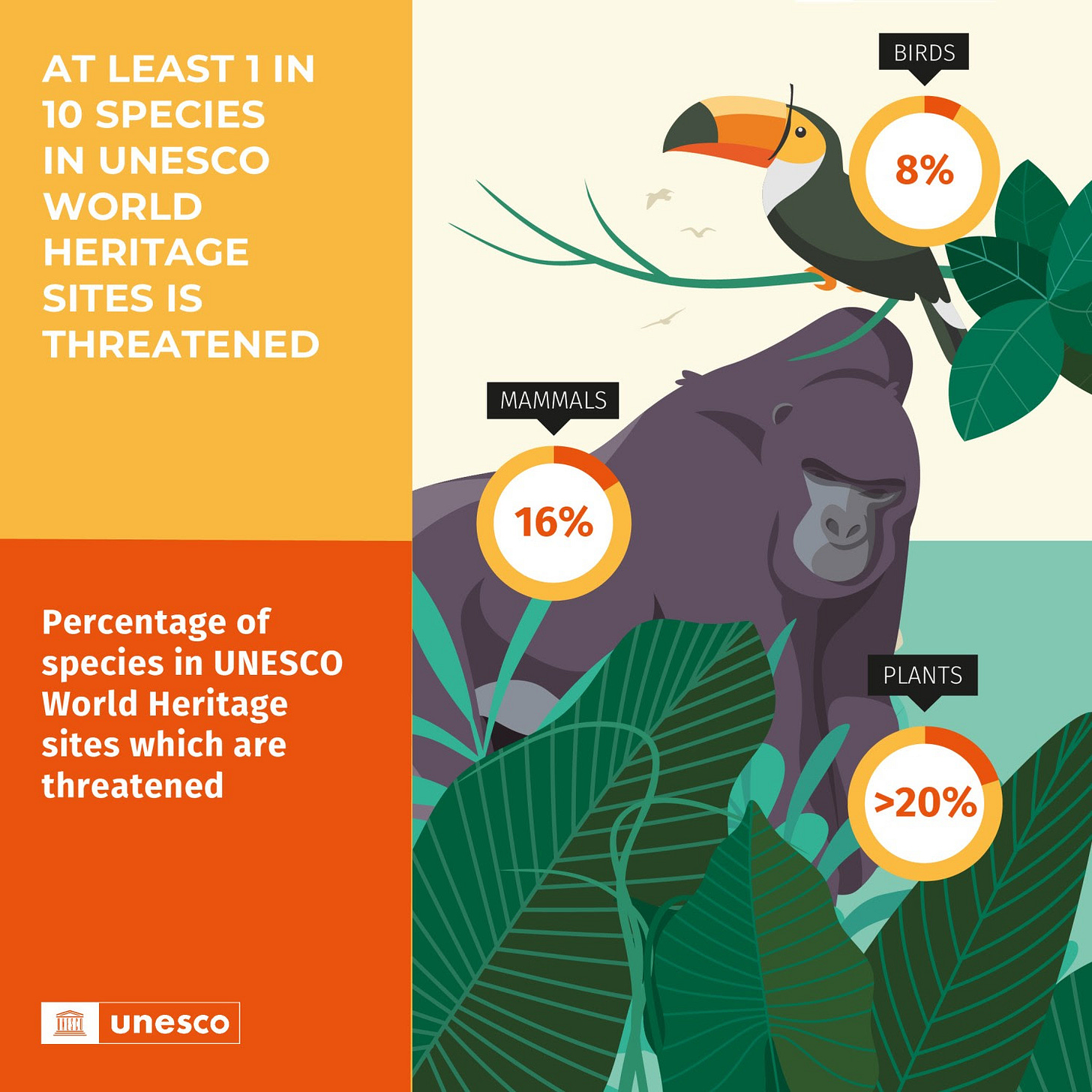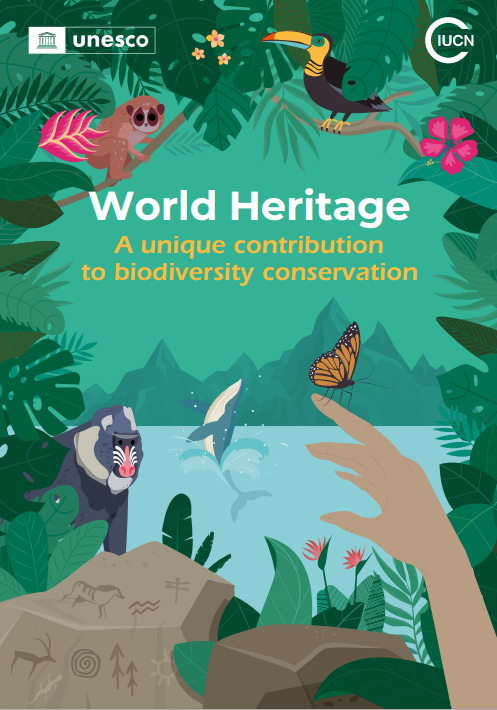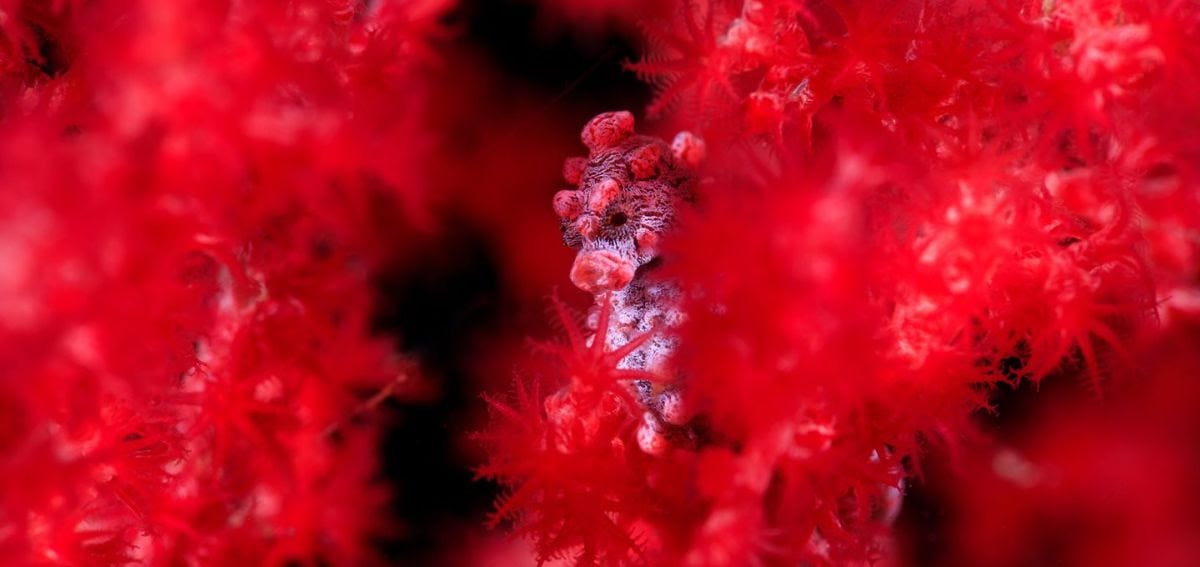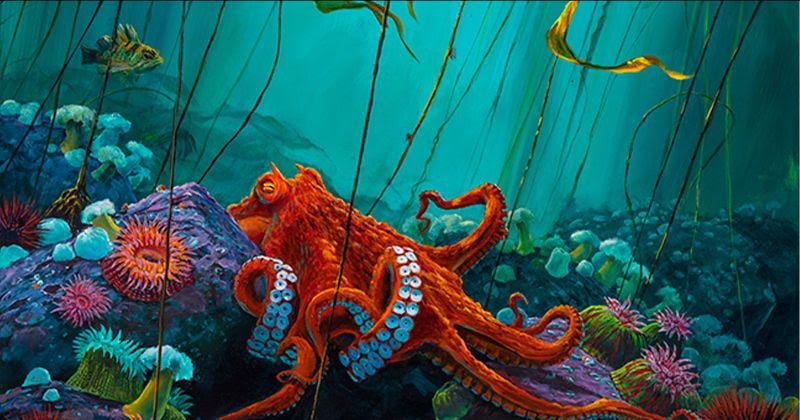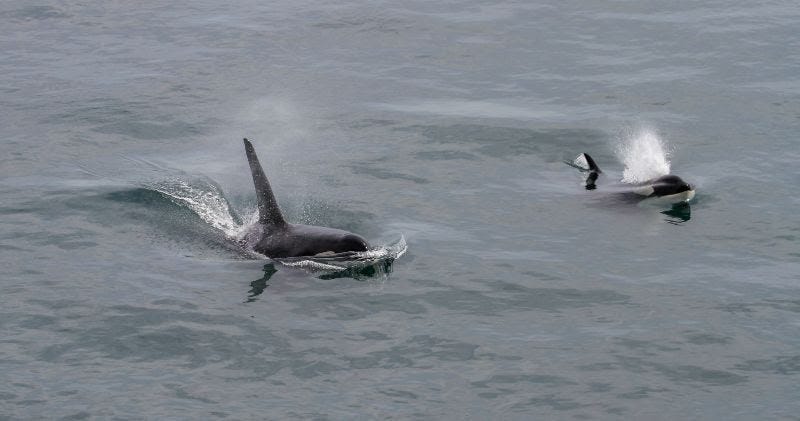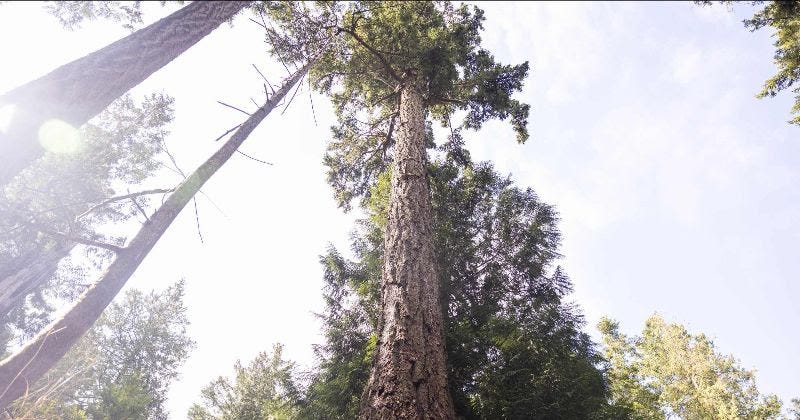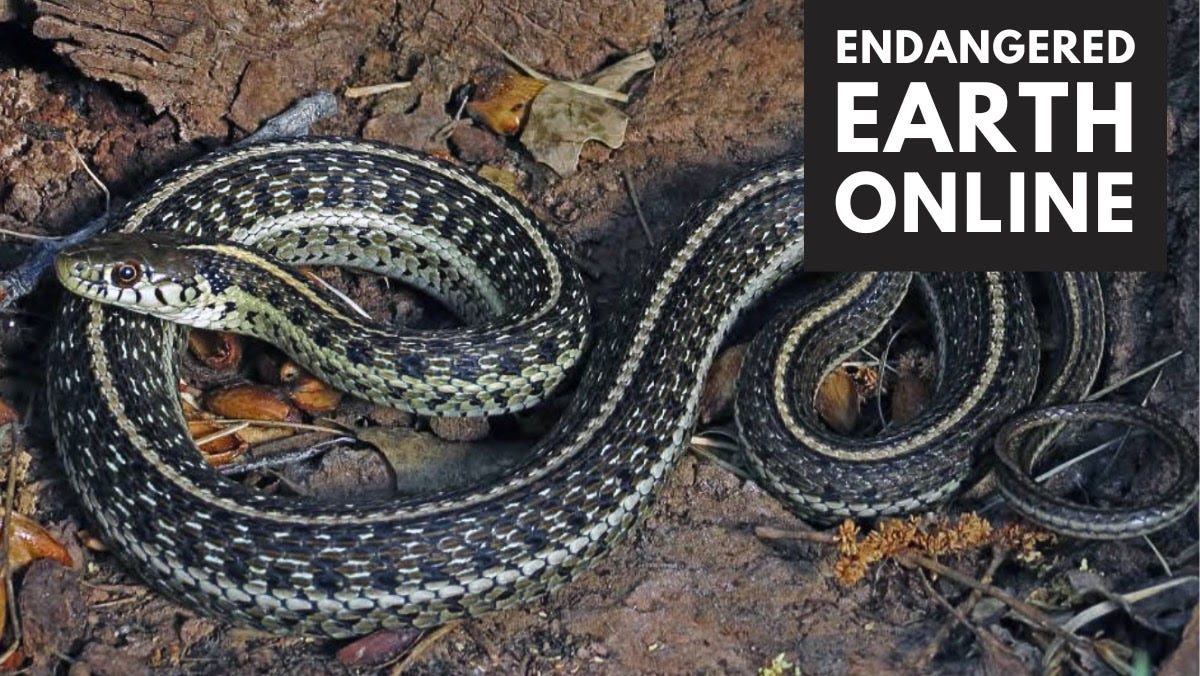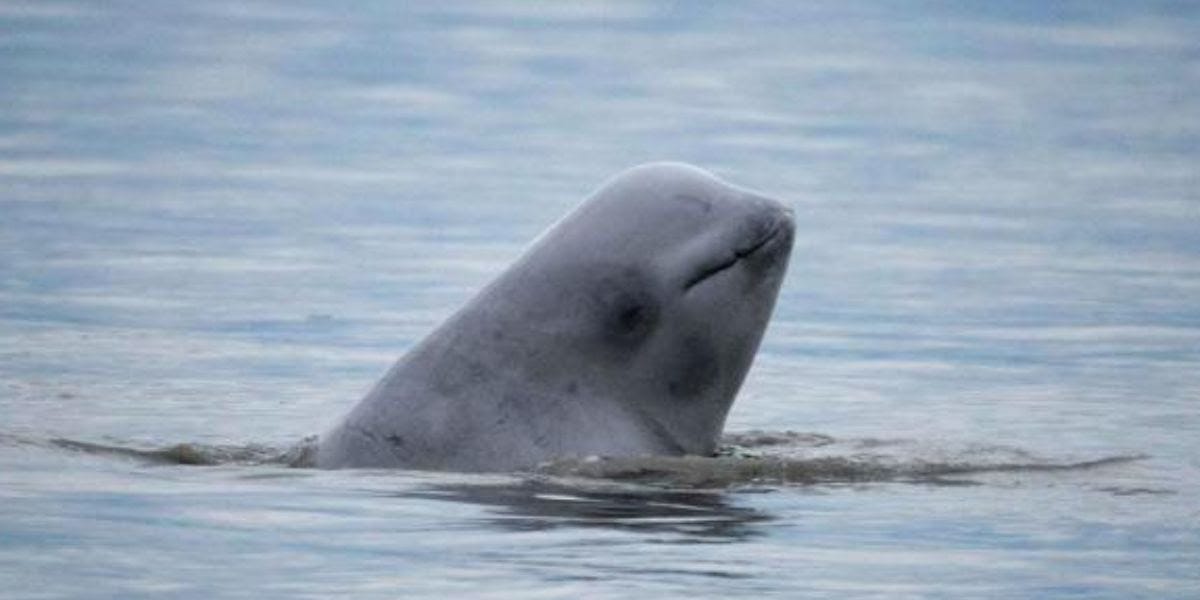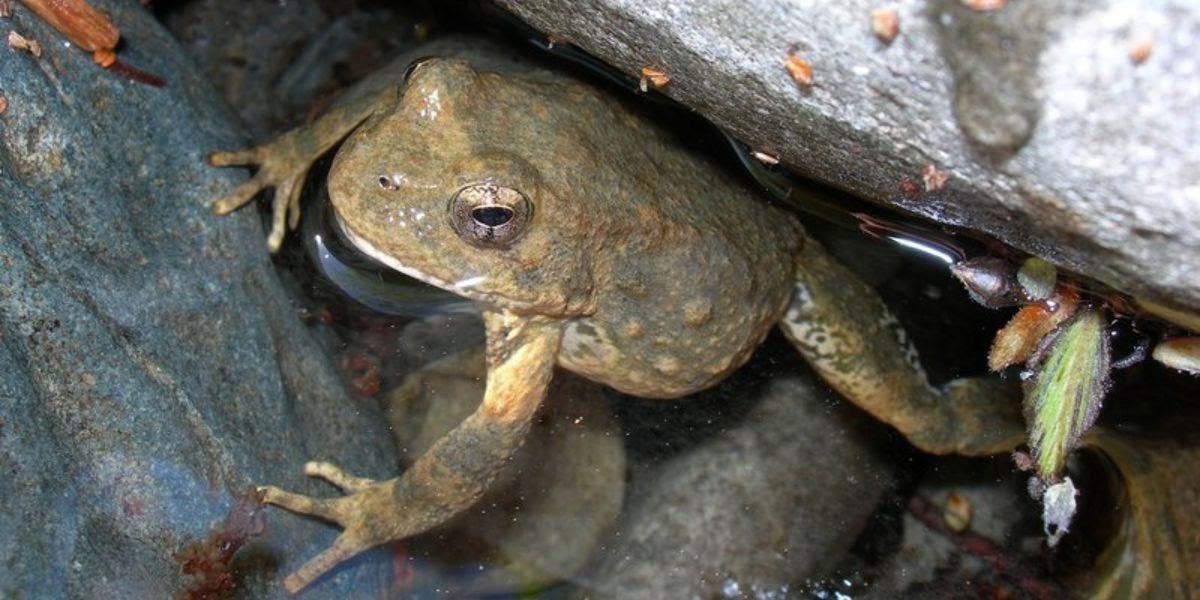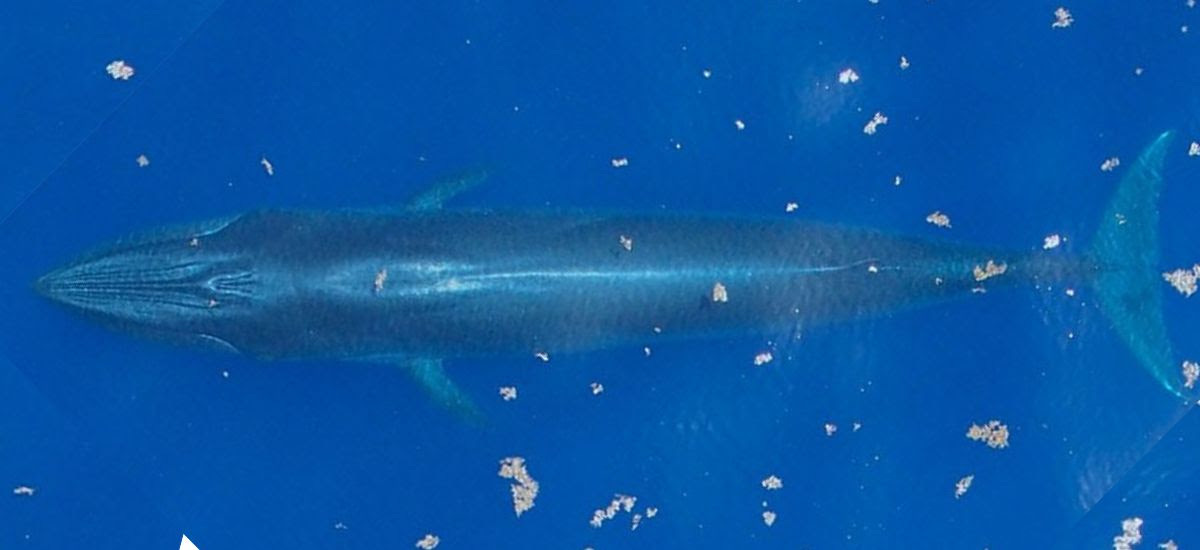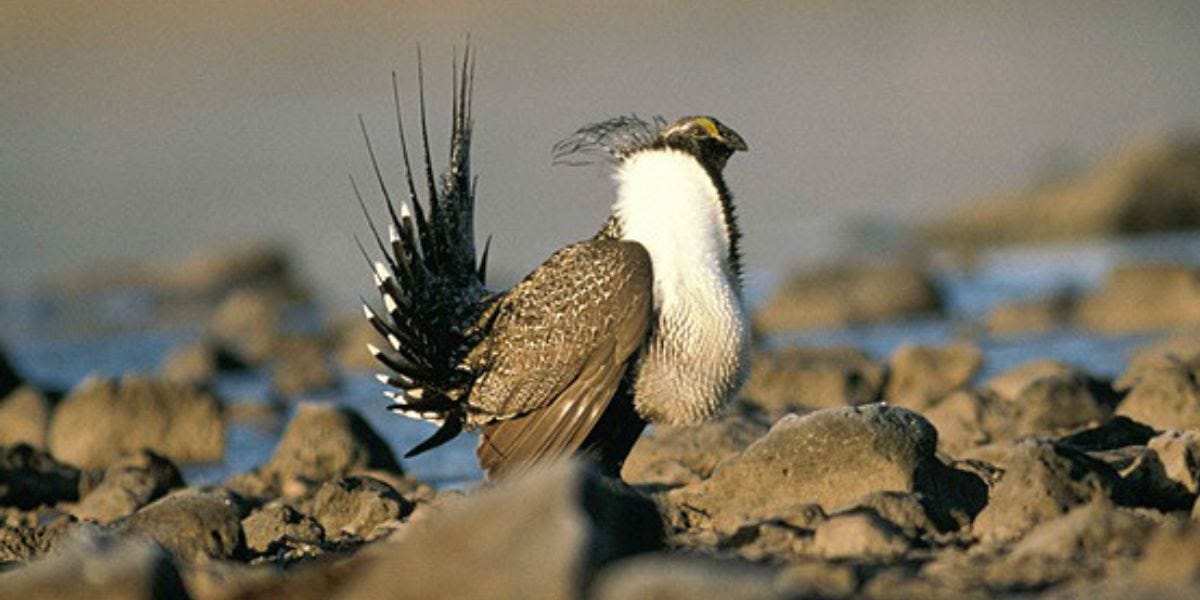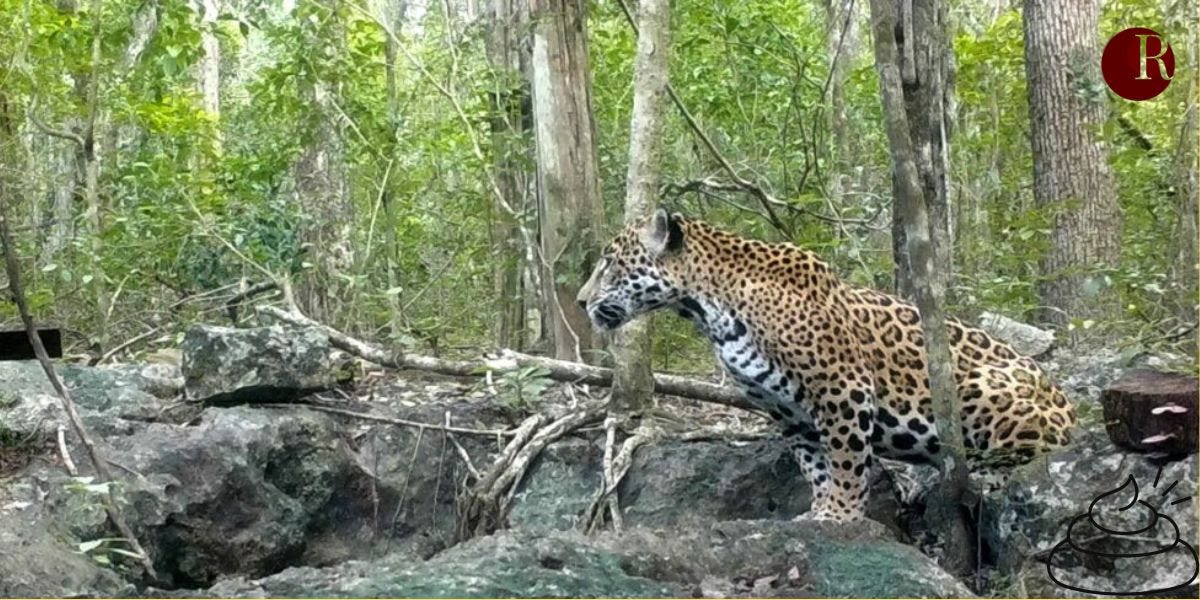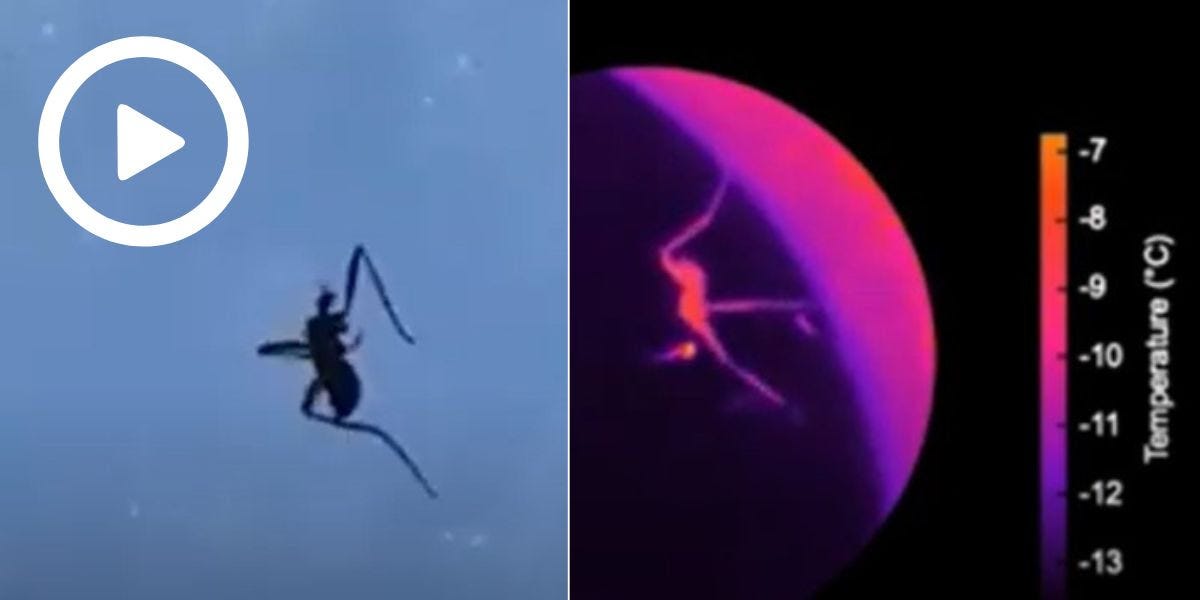Biodiversity is the World's Evolutionary Heritage 🌟🌎
Opportunities & resources for engaging Natural Sciences & activism
UNESCO Highlights
World Heritage: A unique contribution to biodiversity conservation
UNESCO and IUCN publish the first-ever assessment of the status and trends of species across UNESCO World Heritage sites, revealing that they harbour over 20% of mapped global species richness within just 1% of the Earth’s surface. Safeguarding these biodiversity hotspots is fundamental to meet global targets in biodiversity conservation.
“This study demonstrates the relevance of UNESCO World Heritage sites to enhance biodiversity conservation. These 1,157 sites not only represent the most outstanding places in terms of human history and culture, but also protect many major natural areas. They are essential for preserving the diversity of life on Earth, maintaining essential ecosystem services, and addressing climate disruption,” said Audrey Azoulay, Director General of UNESCO.
UNESCO World Heritage sites make up less than 1% of the Earth's surface, yet they harbour more than 20% of mapped global species richness, including more than 75,000 species of plants including trees and over 30,000 species of mammals, birds, fishes, reptiles and amphibians. These sites serve as formidable natural observatories for advancing scientific knowledge thanks to the concentration of over half of all mammals, birds and hard corals species in the world. They are also an endless source of inspiration for new environmental protection initiatives.
The last line of defense against extinction
The World Heritage Convention confers the highest level of international protection to some of the most significant sites for biodiversity conservation in the world. These sites are estimated to protect over 20,000 threatened species, including up to one-third of all elephants, tigers and pandas, and at least one-tenth of great apes, lions and rhinos.
For some species on the brink of extinction, World Heritage sites have become the last line of defense. They are home to all remaining Javan Rhinos, Vaquitas (the world’s smallest cetacean) and Pink Iguanas, as well as more than half of all Sumatran Rhinos, Sumatran Orangutans and Mountain Gorillas.
The World Heritage Convention enables coordinated initiatives with all relevant stakeholders: local populations, national and regional authorities, international organizations, among others – resulting in many conservation success stories. For example, actions undertaken in the Kaziranga National Park (India) and Chitwan National Park (Nepal) since their inscription on the UNESCO World
Heritage List in the mid-1980s have more than doubled the population of Greater one-horned Rhinos to around 4,000 individuals.
Humanity and biodiversity are deeply intertwined
The benefits provided by biodiversity are innumerable and form the bedrock of our relationship with nature. The variety of ecosystems within UNESCO World Heritage sites maintain important environmental services for people, such as protection of water resources, as well as providing jobs and income through sustainable activities. UNESCO World Heritage sites are also instrumental to further strengthen the link between nature and culture, as many cultural sites, including those in urban areas, can also protect important biodiversity and are an ally in efforts to halt nature loss.
The clock is ticking for immediate action
However, there is an urgent need to strengthen conservation measures: every 1°C increase in global temperature could double the number of species threatened by dangerous climate conditions. Given their role as vital biodiversity hotspots, UNESCO World Heritage sites must be protected at all costs by the States Parties of the Convention.
In addition, countries are encouraged to consider proposing additional areas of exceptional biodiversity for World Heritage Listing and to include UNESCO World Heritage sites in their National Biodiversity Strategies and Action Plans (NBSAPs) as they are key to moving the Kunming-Montreal Global Biodiversity Framework (GBF) into action. The study is an additional tool for site managers to take the necessary actions to achieve these objectives.
By 2025, all World Heritage site managers will be trained in climate change adaptation strategies, and by 2029 all sites will have a climate adaptation plan – as announced by the Director General of UNESCO in November 2022 at the 50th anniversary of the Convention.
Click here to consult our mapping of species living in World Heritage sites.
UNESCO and IUCN thank Conservation International, the Botanic Gardens Conservation International (BGCI), the National Center for Ecological Analysis and Synthesis (NCEAS), the University of Arizona and the University of Connecticut for their contribution to this study.
UN Strengthens Children’s Rights to Fight Climate Change in Court
The United Nations Child Rights Committee has published new guidance on the rights of children in relation to the environment with a particular emphasis on climate change.
The UN’s direction on the matter sets forth specific administrative measures nation-states should implement in order to tackle how climate change and humans’ degradation of the environment are affecting children’s rights of enjoyment, as well as to ensure a clean and sustainable planet for current and future generations, a press release from the UN said.
Related: ‘Gamechanger’ Ruling for Young Climate Activists in Historic Montana Trial
HELP RESTORE CORAL REEFS IN ST. CROIX, USVI!
Come join my team!
We're hiring three new positions at our Coral Innovation Hub on St. Croix.
Apply here: http://careers.nature.org
Dragon's child
_____
Neil Garrick-Maidment has spent the last 42 years studying seahorses around the world, and yet, he still finds them to be one of the most extraordinary creatures to dwell in the ocean. In 2000, he set up The Seahorse Trust, not just to look at seahorses but also the marine world as a whole.
"Seahorses are, amongst other things, survivors. They have been around for tens of thousands of years and have adapted to extreme environments and often hostile waters."
Exciting news!
Henley Spiers has been in Scotland for the past month on his first expedition as our Storyteller in Residence 2023. He has been investigating and capturing the impact of marine conservation around the shores of the Isle of Arran and Shetland.
His full-length feature about marine conservation in Scotland will be available to read in an upcoming issue of Oceanographic Magazine.
Right now, you can find out more about his experience in the new Despatches from the Field, featuring behind-the-scenes footage and personal insights right from the heart of the action.
On July 12, the BC government released a draft of their Grizzly Bear Stewardship Framework with a deadline of August 18, 2023 for public consultation and feedback. They have extended the engagement period to September 8, 2023 after many experts raised concern over such a short timeframe for such a lengthy process.
Although the proposed Framework outlines and declares broad, far reaching changes in policy that will affect grizzly bear conservation for decades to come, the restrictive comment period represents the only opportunity for the public to express their concerns and ideas for the future of grizzly bear habitat, food security, and stewardship.
Please take action for grizzly bears
With that said, below is a guide if you would like to fill out the questionnaire now and not lose your opportunity to use your voice. We are continuing to push for an extension to the end of the year, but nothing is confirmed.
The survey should take around 20 minutes.
Mark Hobson is donating proceeds from ‘Octopus: Emerging From Its Den’ to Raincoast
We are so grateful to artist Mark Hobson, a long-time friend and supporter of Raincoast who is donating 10% of sales from purchases of this art to support our efforts to protect the lands, waters, and wildlife of coastal BC.
The Pacific octopus is a symbol of the intricate web of life along the BC coast. These intelligent and mysterious creatures play a crucial role in maintaining the balance of our marine ecosystem. By celebrating the octopus in art, we also celebrate the resilience and beauty of the coastal environment.
At purchase, use the code OCTOPUS10 for 10% off your order. 10% of all sales of ‘Octopus: Emerging From Its Den’ will be donated to Raincoast.
Is it time the critical habitat of endangered killer whales be expanded to include their prey base – Chinook rivers?
This spring, Raincoast began work with a UBC sustainability scholar to examine the case for expanding SRKW critical habitat to include the Fraser River and its tributaries.
We created an interactive map which shows the Chinook rivers that drain into the range and critical habitat of Southern Residents. The three most important watersheds that once provided almost year round availability of large, old Chinook salmon were the Fraser (BC), the Columbia (BC, Washington and Oregon), and the Sacramento – San Joaquin (California).
With their designation as a component of Southern Resident killer whale critical habitat, we could be one step closer to management, conservation, and protection of these rivers that is in keeping with their critical role in maintaining the prey base and survival of critically endangered whales.
Learning about marine plastics, recycling, and sustainability at an innovative facility
Raincoast’s Education Program often collaborates with organizations who share similar goals of understanding and protecting coastal ecosystems, allowing us to incorporate a wider range of topics and providing different perspectives. This year, our Summer Stewardship Program, offered to Tsawwassen youth in partnership with the Tsawwassen First Nation, collaborated with Ocean Legacy Foundation.
Initiated in 2013, Ocean Legacy Foundation (OLF) is a non-profit organization with the goal of ending ocean plastic pollution through education, policy, infrastructure, and cleanups. OLF works to remove and prevent plastics from ending up in the ocean, where they persist for hundreds to thousands of years, breaking up into tiny pieces called microplastics and nanoplastics. Read more about the tour.
Field Notes from a summer of big trees
The Pender Islands Big Tree Registry is a growing database of big, old, and special trees on the Pender Islands, driven by community nominations. It aims to raise awareness about the rare and endangered status of Coastal Douglas-fir (CDF) forests and associated ecosystems characteristic to the Gulf Islands.
The registry has been modelled, with permission, after the University of British Columbia’s (UBC) big tree registry. The CDF biogeoclimatic zone is among the most biodiverse zones in the province. It is also the most degraded. It is the least-protected zone in BC with less than 1% of its forests remaining as old growth and less than 10% older than 120 years.
Read more about intern Aria Willis' summer working with our Forest Conservation Program.
Islands in a Rising Ocean
Tarawa, an atoll and the Republic of Kiribati’s capital.
(From Sea Change: An Atlas of Islands in a Rising Ocean)
“As a result, the atoll’s once thriving village Tebunginako was abandoned in 1994 and its residents relocated 164 feet (50 m) inland. What remains of the original location now rests about 98 feet (30 m) offshore. Most visible is a church.”
This look at the threats of climate change to the Republic of Kiribati island nation is excerpted from Christina Gerhardt’s book Sea Change: An Atlas of Islands in a Rising Ocean, a collection chronicling the challenges all islands face in a warming future.
No. 1208, August 31, 2023
Suits Asks for More Habitat for Southwest Snakes
The Center for Biological Diversity just sued the U.S. Fish and Wildlife Service for cutting critical habitat for two endangered snake species — in Arizona and New Mexico — by more than 90% from its original proposal. Northern Mexican and narrow-headed garter snakes are key indicators of the health of the streams they need to survive, but the Service excluded hundreds of thousands of acres of precious waterways from protection despite the findings of experts.
“Fish and Wildlife officials are choosing to protect the interests of ranchers, developers and the Arizona Game and Fish Department at the expense of endangered species,” said Center cofounder Robin Silver. “I hope a judge will force the agency to follow the law and save these rare aquatic snakes from extinction.”
Help us defend these snakes and other species with a gift to our Saving Life on Earth Fund.
Tell President Biden: Don’t Sell U.S. Waters to Big Oil
President Biden has offered tens of millions of acres of U.S. lands and waters to the fossil fuel industry. Now his administration is proposing to expand oil leasing in the Gulf of Mexico and Alaska, home to critically endangered Rice's whales and endangered Cook Inlet beluga whales.
Allowing more drilling in these fragile places for the next five years will unleash massive carbon emissions and lock us into decades of climate chaos. Biden’s plan will threaten ocean ecosystems and harm endangered species, fisheries, and coastal communities with pollution and spills.
To save our planet, we must say no to fossil fuel development. Take action: Tell the Biden administration to scrap all oil leases in this five-year plan and commit to ending fossil fuel extraction on public lands and waters.
Four Frogs and One Coral Get (More) Protection
In response to many years of Center work, four populations of foothill yellow-legged frogs in California finally won federal protection on Monday. These small frogs live in streams in Central and Southern California and have lost about half their habitat. We first petitioned for them in 2012.
In other Endangered Species Act news this week, NOAA Fisheries has proposed increased protection for pillar corals, a Florida and Caribbean species the Center won protection for in 2014. Threatened by emerging disease, climate change and more, pillar corals got critical habitat this month.
That’s great news, but it shouldn’t have taken over a decade for the frogs and coral to get the help they urgently need. Tell the feds to do their job by fixing the dysfunctional listing system.
Win for Rice’s Whales in the Gulf of Mexico
Under a new legal agreement secured by the Center and partners, federal agencies will look for better ways to protect endangered Rice’s whales and other vulnerable ocean animals from oil and gas drilling in the Gulf of Mexico.
About 51 Rice’s whales remain on Earth, all in the northern Gulf. They’re the only baleen whales who live there year-round, and they lost 20% of their population to the 2010 Deepwater Horizon oil disaster.
“The Gulf ecosystem has suffered immensely from oil spills and offshore drilling operations,” said Kristen Monsell, the Center’s oceans legal director. “Rice’s whales, loggerhead sea turtles and other species are struggling desperately. It’s time to phase out offshore drilling.”
Wolves Return to California National Monument
This summer biologists confirmed that a new gray wolf family, the Tulare pack, has settled into Giant Sequoia National Monument in California, part of the Southern Sierra Nevada that hasn’t seen wolves in more than 100 years.
The return of wolves to California will help rewild the landscape, and that’s good for whole ecosystems as well as for wolves.
“California has laid out a welcome mat for wolves, and we can keep it there if we don’t get led astray by old fears and misconceptions,” said the Center’s Amaroq Weiss in this Los Angeles Times piece.
Win: Court Strikes Down California Gold Drilling
Thanks to a lawsuit by the Center and allies, a federal appeals court just reversed the approval of an exploratory gold-drilling project in California’s Sierra Nevada.
The drilling threatened bi-state sage grouse — a unique, dwindling population struggling to survive — plus groundwater that supports habitat for small, chunky fish called Owens tui chubs, who are already endangered and live in just one creek near the project.
We’re still waiting for the court’s detailed opinion. But no matter what that is, we’ll keep defending these species and the precious groundwater they rely on.
Help us protect more public lands from the mining industry.
Revelator: What Can We Learn From Jaguar Poop?
"Poop is fertile grounds for research,” writes Tara Lohan in one of our favorite new Revelator articles.
She means jaguar poop, which researchers are now using to study the elusive wild cats without intruding on their personal space.
That’s Wild: Self-Amputation Saves Fly Lives
A new study has shown that snow flies amputate their own limbs to survive extreme cold.
Scientists understand very little about these flightless flies — partly because they live in frigid alpine areas that are hard for people to reach.
But now we know that if one of the flies’ legs freezes, these amazing insects can actually remove it to keep ice crystals from reaching their bodies and freezing their organs. They leave the leg — or even multiple legs — behind and keep walking.
Check out this video on YouTube or Facebook to see how it works.

